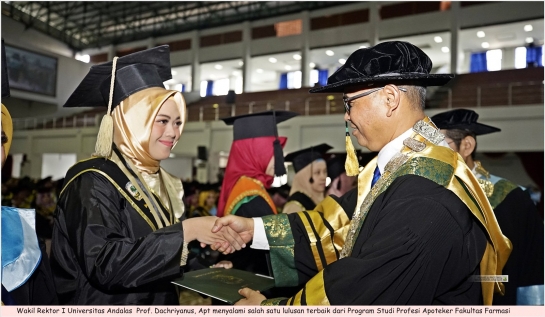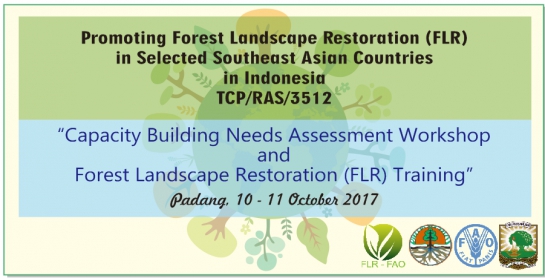Constrains, Opportunities and Challenges
In 2011, the Bonn Challenge was announced with a goal to restore 150 million hectares of deforested and degraded lands by 2020. This ambitious goal was reinforced during the UN Climate Summit 2014 in New York where more than 130 signatories including governments, companies, civil society and indigenous peoples endorsed calls to restore more than 350 million hectares of forests and croplands by 2030. In the Asia-Pacific region, the Asia-Pacific Economic Cooperation (APEC) has adopted an aspirational goal of increasing forest cover in the region by at least 20 million ha by 2020, and member countries of the Asia Pacific Forestry Commission (APFC) and other organizations are placing increasing emphasis on forest restoration. Almost 1.6 billon people in the world, and particularly in Indonesia minimum 20 million communities depend on forest for their livelihoods.
In light of these global targets and emerging national commitments, it is imperative to develop low-cost strategies and techniques for landscape restoration. Lots of efforts to restore, many programs such as rehabilitation, one man-one tree, one million/billion planting, moratorium illegal logging: no new permit, Concession for Restoration ecosystem, Social forestry [community forest-HKm, customary forest-Hutan Adat, private forest-Hutan Rakyat, and Village forest-Hutan Desa], conservation village, fire-free village, law enforcement, contesting and negotiating in international forum such as above mentioned, Climate Change-Bonn Challenge for financing, forming the Peatland Restoration Agency (known as Badan Restorasi Gambut) to challenge 2 million ha peatland restoration until 2019. In other hand, lots of practices to degrade such as forest land conversion to palm oil land, designed-forest fire slash and burn practice without controlling, illegal logging, land encroachment, land grabbing, issued contradictive-policies between sector in same land, forestry sector issue to plant the land, in other hand the mining sector issue to opening land for mining, etc. Almost stakeholders know well the benefits of restoration that are for water supply, prevent disaster (landslide), and biodiversity. They know what relation: upstream-downstream, the forest business is long term purposes. Also local community with their local knowledge could know well to manage environmental friendly. The question is: why they don’t act their knowledge to implement? The answer is that other priority of land uses. There are other interests. Therefore, the key problem is: how to manage the stakeholder’s interest. As we known, every decision, also restoration; the decision is benefit to in one side, and make suffer or pain on the other hand. What kind of such way to tackle? Underlying problem of forest landscape restoration is not just technical problem, but a social and political problem prior to vary interest of stakeholders who either benefits or suffer due to forest landscape restoration decision. Unharmonized regulation makes an unsynchronization of implementation to invest FLR, particularly related regulation that derive to access forest state for local community. However need to be excavated. The policy or regulation concerning land restoration that has already been issued is lacked of socialization so that only few stakeholders are aware. Also, to many NGO driving, i.e. WARSI, CO2 operate BV. There are more 40 NGOs/ENGO work in West Sumatra.
Indonesia allocated 12,7 million ha for community’s access for forest products for their livelihoods. It is therefore, artificial regeneration is important to benefit. Despite these economic and environmental advantages, FLR is often overlooked when restoration policies and programs are designed for a number of reasons, including: lack of its recognition as a viable restoration option; perverse incentives favoring clearing of young secondary growth for plantation development or other land uses; lack of institutional support by government agencies and other organizations; unclear tenure and property rights; lack of incentives for local communities; and uncertainly over the restoration process and outcomes. FAO with Forest R &D Centre through technical program TCP/RAS/3512 indicated that tailoring stakeholders and partner become important and crucial.
Goals
A workshop and training will be organized in Padang, West Sumatra. These programs will have convened in collaboration with UNAND and Forestry Province Office. The aim is to better understand the challenges and opportunities for FLR and to promote its inclusion as a major component of large-scale restoration initiatives. Also, the organizing is to enhance technical capacities of Government and communities to identify opportunities, plan, and implement FLR.
The specific objectives of the workshop are as follows :
- Raise awareness among policy makers and practitioners regarding the potential of FLR in contributing to the achievement of forest restoration goals.
- Share experience in and scope for using artificial regeneration as a tool for forest restoration. Discuss key issues related to restoring forestlands through artificial regeneration: including the ecology, techniques an monitoring of regeneration; enabling policy, regulatory and institutional framework; and the economic and social dimensions of natural regeneration, and its role in identify barriers, gaps and opportunities for mainstreaming the application of artificial regeneration as a viable and effective strategy in forest restoration to community benefits; and
- Develop recommendations on the way forward to promote the use of artificial regeneration in regional and national restoration initiatives. The result of the workshop will also feed into the consultation on regional strategy and action plan for forest and landscape restoration which will be incorporated into the national strategies.
- Promoting farest landscape restoration program for students in West Sumatra through photography and short film events.
Date and Venue :
10-11 October 2017
Graduate Program Andalas University, Padang, West Sumatera
Agenda and Design
Time
|
Programme
|
Moderator/PIC
|
|
Tuesday, 10 October 2017 Capacity Building Needs Assessment
|
|
09.00-09.20
|
Opening
|
Province Forestry Office/Forest R&D Centre
|
|
09.20-10.00
|
- Overview Provincial on the Challenge and potential of FLR
- Highlights from FAO TCP Project on Promoting FLR
|
NPC
|
|
10.00-10.15
|
Coffee/tea break
[OC announce to all participants to self-identify to affiliate one group: Policy, regulation and institution; Economic and Social Aspects of FLR, Ecology of FLR; Decision-making and prioritization tools and guidelines to enhance and monitor the success of FLR strategies, and prepare for its discussion]
|
OC
|
|
10.15-11.00
|
Experiences in FLR: Forest Restoration in witness
- Site Nagari Sirukam
- Site Nagari Indudur
- Bagong Pagasa Fondation (Patrict Dugan Jr)
Q&A, Discussion
[Wali nagari and BPF present their problem, constraints, opportunities, and challenges to restore their degraded lands]
|
Moderator: Dr Titiek Setyawati
Notulis: UNAND
|
|
11.00-12.30
|
Policy, regulation and institution [Forestry Province Office, Ditjen PSKL]
- Categorization on FLR and recognizing it as a viable landuse option
- Removing Policy Disincentive
- Developing legal framework that encourage and enable FLR
- Secure land tenure and clear property rights for land owners/managers
- Strengthening institutional support for FLR as a restoration option
Q&A, Discussion
|
Moderator: Director Forest Center
Notulis: UNAND
|
|
12.30-13.15
|
Praying and Lunch
|
OC
|
|
13.15-14.45
|
Economic and Social Aspects of FLR (WARSI Indonesia, UNDALAS)
- Developing Incentives for regenerating degraded land
- Creating value from secondary forests
- Making it an attractive investment option
- Changing local people’s perception of regeneration degraded land
Q&A, Discussion
|
Moderator: Forestry Province Office
Notulis: UNAND
|
|
14.45-16.30
|
Group discussions
|
NPC and NC
|
|
Tuesday, 10 October 2017 Welcoming moment
|
|
19.00-21.00
|
Welcome dinner [and Minang Dance-TBD] and [announce FLR Video high priorities-TBD]
|
|
|
Wednesday, 11 October 2017 Forest Restoration Landscape (FLR) Training
|
|
08.00-08.30
|
Highlight: Policy, regulation and institutions, economic and social aspects of FLR
|
|
|
08.30-10.00
|
Ecology of FLR [Dit Konservasi Kawasan KSDAE, Dr Maman Turjaman, MS]
- Implication of species biology on regeneration success
- Biophysichal basis of FLR (genetic adaptation, biotic interactions, local biodiversity)
Q&A, Discussion
|
Moderator: UNAND
Notulis: UNAND
|
|
10.00-10.15
|
Coffee/tea break
|
|
|
10.15-12.30
|
Decision-making and prioritization tools and guidelines to enhance and monitor the success of FLR strategies [Ir Atok Subiakto, MSc; Forestry Province office]
- Mapping probabilities and prioritizing areas for FLR
- Management tools and guidelines
- [Monitoring through spatial tools and field survey]
Q&A, Discussion
|
Moderator: UNAND
Notulis: UNAND
|
|
12.30-13.15
|
Praying and Lunch
|
OC
|
|
13.15-16.00
|
Group discussion and reporting back: Identifying constrains, opportunities and next steps
Group 1 Policy, regulation and institution
Group 2 Economic and Social Aspects of FLR
Group 3 Ecology of FLR
Group 4 Decision-making and prioritization tools and guidelines to enhance and monitor the success of FLR strategies, and prepare for its discussion
|
Moderator: Dr Titiek Setyawati, MSc.
|
|
16.00-16.15
|
Wrap up and Closing
|
Province Forestry Office/Forest R&D Center
|
Exhibition Program
Time
|
Programme
|
Moderator/PIC
|
|
Wednesday, 11 October 2017
|
|
08.00-15.55
|
|
FLR Team
|
|
09.00-11.00
|
|
FLR Team
|
|
11.00-15.00
|
|
FLR Team
|
|
15.30-15.55
|
Photography winner announcement at Workshop Closing
|
FLR Team
|
Ministry of Environment and Forestry
1. Kepala Badan Penelitian, Pengembangan dan Inovasi (FOERDIA)
2. Kepala Pusat Litbang Hutan
3. Sekretaris Ditjen PSKL
4. Direktur Penyiapan Kawasan Perhutanan Sosial, Ditjen PSKL
5. Direktur Kemitraan Lingkungan, Ditjen PSKL
6. Direktur Usaha Jasa Lingkungan dan Hasil Hutan Bukan Kayu Hutan Produksi, Ditjen PHPL
7. Direktur Kawasan Konservasi, Ditjen KSDAE
8. Kepala Bidang Program dan Evaluasi, Puslitbang Hutan, BLI
Forestry Province Office of West Sumatera
9. Kepala Dinas Kehutanan Provinsi Sumatera Barat
10. Sdr. Yonefis Yusman, SH.MM.
11. Sdr.Kusworo, SP.,MM.
12. Kelompok Kerja Perhutanan Sosial Prov. Sumatera Barat (1 orang)
13. Kepala BP DAS Provinsi Sumbar
Solok District
14. KPPHL Solok
15. Kelompok Kerja Perhutanan Sosial Kab Solok, Sumbar (1 orang)
Local Community
16. Wali Nagari Indudur
17. Ketua BPAN Indudur
18. Ketua Kerapatan Adat Nagari Indudur
19. Ketua HKM Indudur
20. Anggota HKM Indudur (1 orang)
21. Wali Nagari Hutan Sirukam
22. Ketua BPAN Sirukam
23. Ketua Kerapatan Adat Nagari Sirukam
24. Ketua Lembaga Pengelola Hutan Nagari Sirukam
25. Anggota Lembaga Pengelola Hutan Nagari Sirukam (1orang)
Environment Non-Government Organization
26. CO2 Operate BV
27. WARSI Sumatera Barat
28. Bagong Pagasa Fondation – Philipine
Universities
29. Universitas Andalas
30. STKIP PGRI Sumatera Barat
FAO Representatives
31. Ir. Ageng Herianto (FAO Indonesia)/Team
National Expert
32. Dr. Titiek Setyawati, MSc.
33. Ir. Atok Subiyakto,MSc.
34. Dr.Maman Turjaman, DEA.
35. Ir. Watty Karyati (Perencana Madya, Ditjen Planologi Kehutanan dan Tata Lingkungan)
36. Deden Djaenuddin, SSi.,MSi.
FAO FLR: TCP/RAS/3512
37. National Project Coordinator FAO-FLR TCP/RAS/3512
38. Staf administrasi (1 orang)
Displays, exhibitions and Contest
Through display, exhibition and mass communication, to expect a process of disseminating messages Forest Landscape Restoration to a large number of audiences through some forms of technology at a time, that are the means of public communication reaching to the large, scattered, heterogeneous and anonymous audience at the same time. These are also expected to prove a boon to Forest society. There are the powerful means that do not only influence today’s world but also shape the globe of tomorrow on Forest Landscape purposes. Organizer Committee will invite all partners to be involved in this exhibitions and media corner.
Photography and short movie contest have a positive impact to enhance awareness of youth community on forest landscape restoration. The photography and short movie contest theme is “FLR-Leveraging Ecological Function and Enhancing Livelihoods”. The contest participant was from University Student in West Sumatera.





